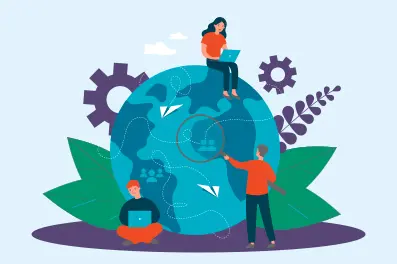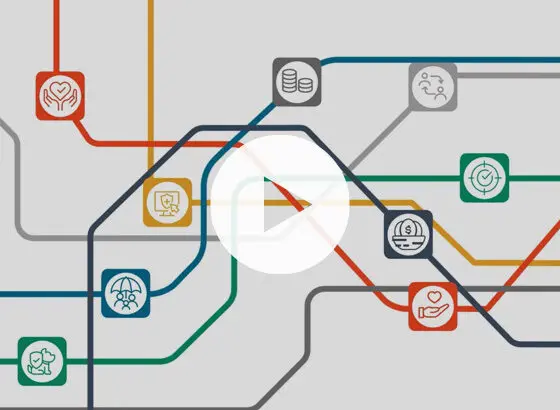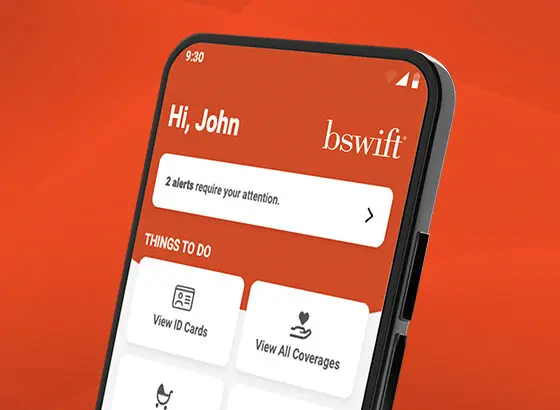Change is in the air. As we enter 2024, new innovations and shifts in the workplace are transforming the employee benefits landscape. From cutting-edge technologies like generative AI to prioritizing targeted well-being initiatives, cost-containment strategies, and remote work flexibility, 2024 offers opportunities as well as complexities for the future of HR.
1. AI Will Change HR
 Of all the emerging technologies making waves, artificial intelligence (AI) stands poised to make the biggest splash in HR, and ultimately disrupt nearly every facet of work. AI is already helping streamline repetitive tasks and provide personalized recommendations. And it’s only been a little more than a year since ChatGPT took the world by storm.
Of all the emerging technologies making waves, artificial intelligence (AI) stands poised to make the biggest splash in HR, and ultimately disrupt nearly every facet of work. AI is already helping streamline repetitive tasks and provide personalized recommendations. And it’s only been a little more than a year since ChatGPT took the world by storm.
In 2024, we expect to see HR functions like recruiting, performance management, and benefits delivery transformed. Routine administrative tasks could begin being fully automated while AI might support more strategic work, too.
As with any new technology, considerations around data privacy and bias will be paramount. And as employers walk that line, strong change management will grow increasingly vital. But employed judiciously, AI could free up HR teams to focus more on the human element of their jobs – relationships, communication, and compassionate support of employees.
Our own Emma® digital assistant at bswift uses AI to deliver personalized benefits and employee support. As this technology grows more advanced, we’re curious to see how employers balance usefulness and questions around personalization. 2024 will reveal more answers.
RELATED: Hire Emma®: bswift’s AI HR Assistant That Pays for Herself
2. Strategies to Contain Rising Health Care Costs Become More Urgent
 While AI and other exciting innovations in HR grab all the headlines, perennial issues like rising health care costs still weigh heavily on employers. The average cost U.S. employers pay for their employees’ health care will increase 8.5% to more than $15,000 per employee in 2024, according to global professional services firm AON. The data points to medical inflation, new drugs and medical technologies, a shift to specialty drugs, and a lack of care management.
While AI and other exciting innovations in HR grab all the headlines, perennial issues like rising health care costs still weigh heavily on employers. The average cost U.S. employers pay for their employees’ health care will increase 8.5% to more than $15,000 per employee in 2024, according to global professional services firm AON. The data points to medical inflation, new drugs and medical technologies, a shift to specialty drugs, and a lack of care management.
Employers will need to be vigilant to avoid passing those costs on to employees by adopting strategies to control health care costs. With holistic prevention and consumer engagement at the core, we expect to see more tailored plan initiatives and expanded well-being solutions, disease management programs, preventive health incentives, nurse advice lines, and expanded virtual care options.
To start, HR will need to engage in robust benefits education and outreach accompanying any plan changes. As with any change aimed at expenses, communication is vital. Employees will accept alterations better if two things are addressed. First, the rationale needs to be clearly conveyed with empathy and transparency, and second, they need to feel their well-being is still taken care of.
RELATED: Here’s How to Create an Engaging Employee Benefits Communication Strategy
3. HR Targets Well-Being Through Point Solutions
 Speaking of well-being, a focus on the holistic – physical, mental, financial, and social health – continues its momentum into 2024.
Speaking of well-being, a focus on the holistic – physical, mental, financial, and social health – continues its momentum into 2024.
Back during the pandemic, 68% of HR managers called employee well-being and mental health a top priority, according to the Future Workplace HR Sentiment Survey. However, only 24% of employees actually felt their employers cared about their well-being, according to Gallup. This imbalance revealed a clear need for more tangible, visible support tailored to individual needs.
Enter well-being point solutions, tailored programs focused on boosting a specific aspect of well-being for physical, emotional, financial, and personal needs. They’ll be a growing part of your HR strategy in 2024.
These tools provide more robust help designed around single wellness dimension like mindfulness, nutrition, working out, getting adequate sleep, or chronic condition management. They are especially helpful for remote employees or struggling populations.
At bswift, our Strategic Partnership Program seamlessly integrates best-in-class point solutions across benefits categories into one centralized portal. Through consolidated contracting and enrollment, we’ve connected the dots for simplified delivery. With partners purposefully enhancing health across all four pillars of well-being, our marketplace model offers flexibility to customize support.
RELATED: bswift Elevate™: Empowering Holistic Employee Well–Being, Anywhere and Anytime
4. Remote-First and Hybrid Work Reshapes Benefits Delivery
 Work fundamentally changed after the experiences of the pandemic. And that includes when and where work happens.
Work fundamentally changed after the experiences of the pandemic. And that includes when and where work happens.
Late in 2023, Stanford economist Nick Bloom declared that ‘Return to Office’ is dead. Until recently, work-from-home rates were falling from their height in the pandemic. And office occupancy was rising again, too. But that trend ended in 2023. Now it looks like it’s reversing. Key statistics on remote work suggest the hybrid and remote-first models will only grow.
As older workers age out, younger generations and improved collaborative tech will accelerate this shift. And with 47% of executives saying they’ll allow fulltime remote work, plus nearly a quarter of all employees projected to be remote by 2025, almost every workplace process needs an online equivalent – benefits included.
Employers will need everything from an intuitive online benefits enrollment platform and online benefits support to virtual benefits fairs and a great employee benefits communications plan that serves both remote and onsite workers well.
From FSAs for home office expenses to expanded mental health resources to health plans covering providers nationwide, benefits fit for a remote-first workforce look different than location-dependent offerings.
Adapting to a remote-first world requires real work, but the payoffs in talent access and retention will justify the effort. Leaning into flexible arrangements sets employers up for the emerging decentralization of work.
At bswift, our digital platforms bring together cloud technology, automation, machine learning, and more to anchor benefits in an increasingly decentralized work world. And bswift’s dedicated customer service center empowers employees with the personal touch that makes benefits easier for millions. As remote trends persist, we remain committed to removing friction from essential programs.
Adapting Benefits Strategies for the Future of HR
Change inevitably comes with some turbulence – but also as a breath of fresh air. 2024 promises immense possibility and the chance to transform work with an eye toward innovation, empathy, and vision.
|
We’ll continue to explore the people, technology, and ideas, boldly reshaping benefits administration in Rancho Mirage, California, this April.
|
 |








































